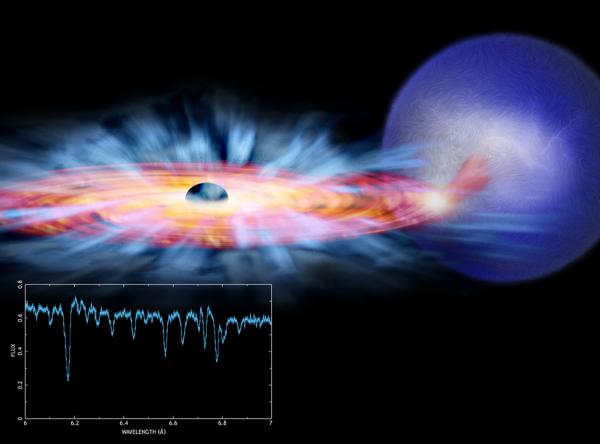GRO J1655-40: A binary star system consisting of a black hole and a normal star, located about 11,000 light years from Earth.
Caption: The Chandra X-ray spectrum (see inset) of J1655 indicates that powerful magnetic fields play a key role in generating friction in a disk of gas swirling around a black hole. This friction heats the gas and causes it to spiral inward, emitting X-rays in the process. Magnetic turbulence also drives some of the gas away from the disk in a high speed wind (light blue matter in illustration). By analyzing the disk wind of J1655, astronomers confirmed long-held suspicions that magnetic friction is central to understanding how black holes accrete matter rapidly. This discovery provides insight into a process that is important in a wide range of cosmic settings, from supermassive black holes to planet-forming disks around young sun-like stars.
Chandra X-ray Observatory ACIS/HETG Image
|


